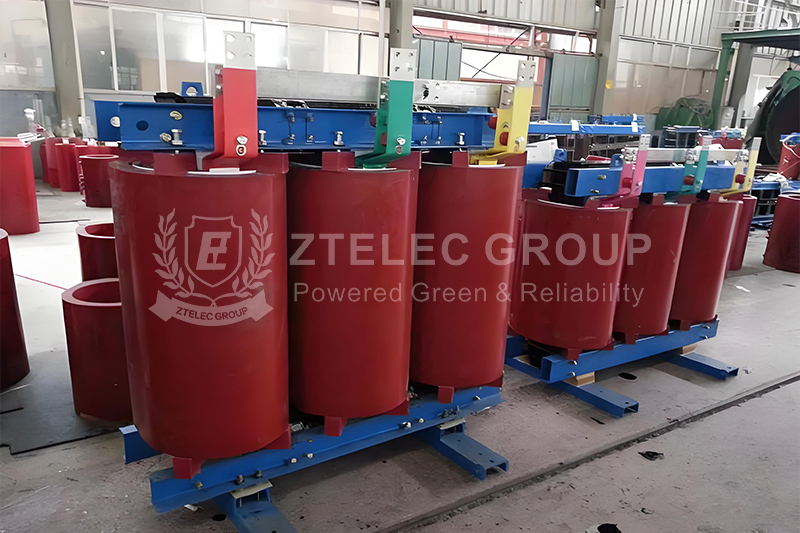What are the losses of transformer in operation? How to reduce the loss?
What are the losses of transformer in operation?
1. Iron loss
Iron loss refers to the loss caused by the material's hysteresis and eddy current, when the periodically changing magnetic force line passes through the material in the transformer core lamination. Specifically, when the primary winding of the transformer is energized, the magnetic flux generated by the coil flows in the core. Because the core itself is also a conductor, in the plane perpendicular to the magnetic force line will induce the potential, which forms a closed loop on the cross section of the core and generates current like a vortex. So it is called "vortex". This "eddy current" increases the loss of the transformer, heats up the transformer core, and increases the temperature rise of the transformer. The iron loss is related to the operating voltage and tap voltage, but not to the load current.
2. Copper damage
Copper loss, also known as load loss, is caused by the resistance of the transformer winding and is generated by the load current passing through the winding. When there is current passing through the primary and secondary coils of the transformer, electrical energy is lost. And this part of the loss is often consumed as heat. Copper loss is proportional to the square of the load current, which is independent of the primary voltage and the core of the transformer.
3. Stray loss
Stray loss refers to the loss of leads and housings and other structural metal parts. It is related to load. Although the stray loss is a small proportion of the total transformer loss, it can not be ignored in some cases.

How to reduce the loss?
Reasonable selection of transformer capacity:
The capacity of the transformer should be selected according to the load size, which is to ensure that the transformer is operated in the economic operation area and to avoid the phenomenon of "big horse trolley".
For seasonal or temporary loads, the use of capacitive transformers or parallel operation can be considered to improve equipment utilization.
Increase power factor:
A shunt capacitor bank is installed on the low voltage side of the transformer to improve the power factor and reduce the reactive power loss.
Check the operation of the capacitor bank regularly to ensure that it is working properly.
Strengthen the maintenance and management of transformers:
Regular inspection of the transformer, timely detection and treatment of defects.
Clean the dirt and dust on the transformer, keep its heat dissipation good.
Check the transformer oil level and oil quality, ensure that the oil level is normal and the oil quality is good.
Energy-saving transformer:
Promote the use of high-efficiency and energy-saving transformers such as S11 and S13, which are designed and manufactured with new technologies and new materials and can significantly reduce no-load loss and load loss.
Optimize transformer operation:
For substations with multiple transformers running in parallel, the number of transformers operating should be adjusted according to the load situation to avoid light load or no-load operation.
For transformers with large seasonal load changes, on-load regulating transformers can be considered to adapt to changes in load.
- more+releated article
- 2026-01-04Common Power Transformer Faults: Causes, Solut
- 2025-12-312026 New Year Holiday Notice
- 2025-12-31Operation, Maintenance, and Service Life Manag
- 2025-12-30How to Select a 100 kVA–500 kVA Distribution
- 2025-12-29The Impact of NHN NMN Composite Insulation on
- 2025-12-26Practical Application of GPO-3 Insulation Boar
- 2025-12-2510kV Transformer Replacement Timeline: Install
- 2025-12-25Low Smoke EN45545 GPO3 UPGM203 Laminated Board
- 2025-12-24Merry Christmas — ZTelecgroup Christmas Cele
- 2025-12-24How to Select a Suitable 50kVA–500kVA Distri





